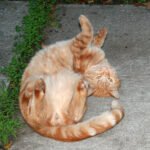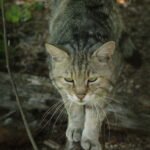Have you ever noticed your cat trailing behind you from room to room, only to dart away the second you reach out? It’s both endearing and perplexing! Cat lovers everywhere have wondered about this mysterious behavior. Why do our feline companions seem so eager to be near us, yet hesitant to engage in direct contact? The answer is a fascinating blend of instinct, emotion, and the unique way cats view their world. Understanding these subtle signals can deepen the bond with your whiskered friend and turn puzzlement into appreciation.
Natural Curiosity: A Cat’s Ever-Present Instinct

Cats are born explorers; their curiosity is almost legendary. This desire to investigate their environment is wired into their DNA. When your cat follows you around the house, it’s often driven by an irresistible urge to know what you’re up to. Every move you make could mean something important—perhaps food is involved, or maybe there’s a new scent or object to explore. Yet, as natural observers, cats like to keep a little distance while they assess. This allows them to stay alert and retreat quickly if something startles them. Their cautious curiosity keeps them safe in the wild and has carried over into their lives as cherished house pets.
Seeking Security and Companionship

Despite their reputation for independence, cats are social creatures who crave a sense of security. Following you around is your cat’s way of staying close to the “safe zone”—that’s you! You are their source of comfort and stability in a sometimes unpredictable world. However, direct contact can sometimes be overwhelming, especially if your cat has had negative experiences or simply prefers their own space. By shadowing you, they get the reassurance of your presence without the pressure of touch. It’s like being in the same room as a friend but sitting on separate couches—close, but not too close.
Communication Through Body Language

Cats have a rich vocabulary of body language, and following without direct contact is part of it. Your cat may be signaling, “I like you, but I need my space.” This behavior can be compared to a child peeking around the corner to watch a parent—not quite ready for a hug, but reassured by proximity. Sometimes, a flicking tail or slow blink will accompany this behavior, letting you know that trust is present, even if cuddling is not on the menu. Understanding these subtle cues can transform the way you relate to your pet, reducing frustration and building mutual respect.
Maintaining Independence: The Cat’s Core Value

Independence is at the heart of a cat’s personality. Even the most affectionate felines value control over their interactions. Following you lets them feel involved without giving up their autonomy. It’s their way of saying, “I want to be part of your world, but on my terms.” This need for independence is especially pronounced in cats who have lived outdoors or had to fend for themselves before finding a loving home. Giving your cat the freedom to choose when and how they interact strengthens the bond and shows respect for their unique spirit.
Past Experiences and Socialization

A cat’s history plays a huge role in how they relate to people. Cats that were well-socialized as kittens often enjoy more contact, while those with less human interaction may be more reserved. Traumatic events or rough handling can also make a cat wary of direct touch. By following you, these cats reveal a desire to connect, even if they’re not ready for full-on affection. Over time, patience and gentle encouragement can help build confidence, turning fleeting shadows into moments of true connection.
Scent and Territory: The Invisible Bonds

Cats experience their world through scent, and following you helps them keep tabs on their territory. They may rub against doorframes or furniture along the way, depositing their scent and reassuring themselves that all is well. By trailing you, your cat is both exploring and reaffirming their claim on shared space. Direct contact might not be necessary for them to feel close; sometimes, just being near you is enough to reinforce these invisible bonds. This behavior is one of the many ways cats express affection without physical touch.
Trust Building in the Cat-Human Relationship

Building trust with a cat is a gradual process, marked by small steps and subtle gestures. When your cat follows you but avoids direct contact, it’s a sign they’re testing the waters. Each day spent in your company, observing your routines, and being near you without pressure, helps to build a stronger, more resilient relationship. Offering treats, speaking softly, and respecting their boundaries will often encourage more contact over time. Remember, in the world of cats, trust is the greatest gift you can receive—sometimes shown not by cuddles, but by quiet companionship.
Understanding why cats follow you yet shy away from direct contact can turn confusion into admiration. Their actions are a blend of curiosity, caution, and affection, all shaped by instinct and experience. With patience and empathy, every step your cat takes behind you becomes another thread in the tapestry of your special bond.

Growing up traveling and experiencing new cultures and wonders, I have had a passion for nature, adventuring, photography, and videography. I am currently working towards a BSc in Biodiversity and Ecology at Stellenbosch University, and I hope to specialise in Marine Sciences one day.
Please send any feedback to Feedback@animalsaroundtheglobe.com






